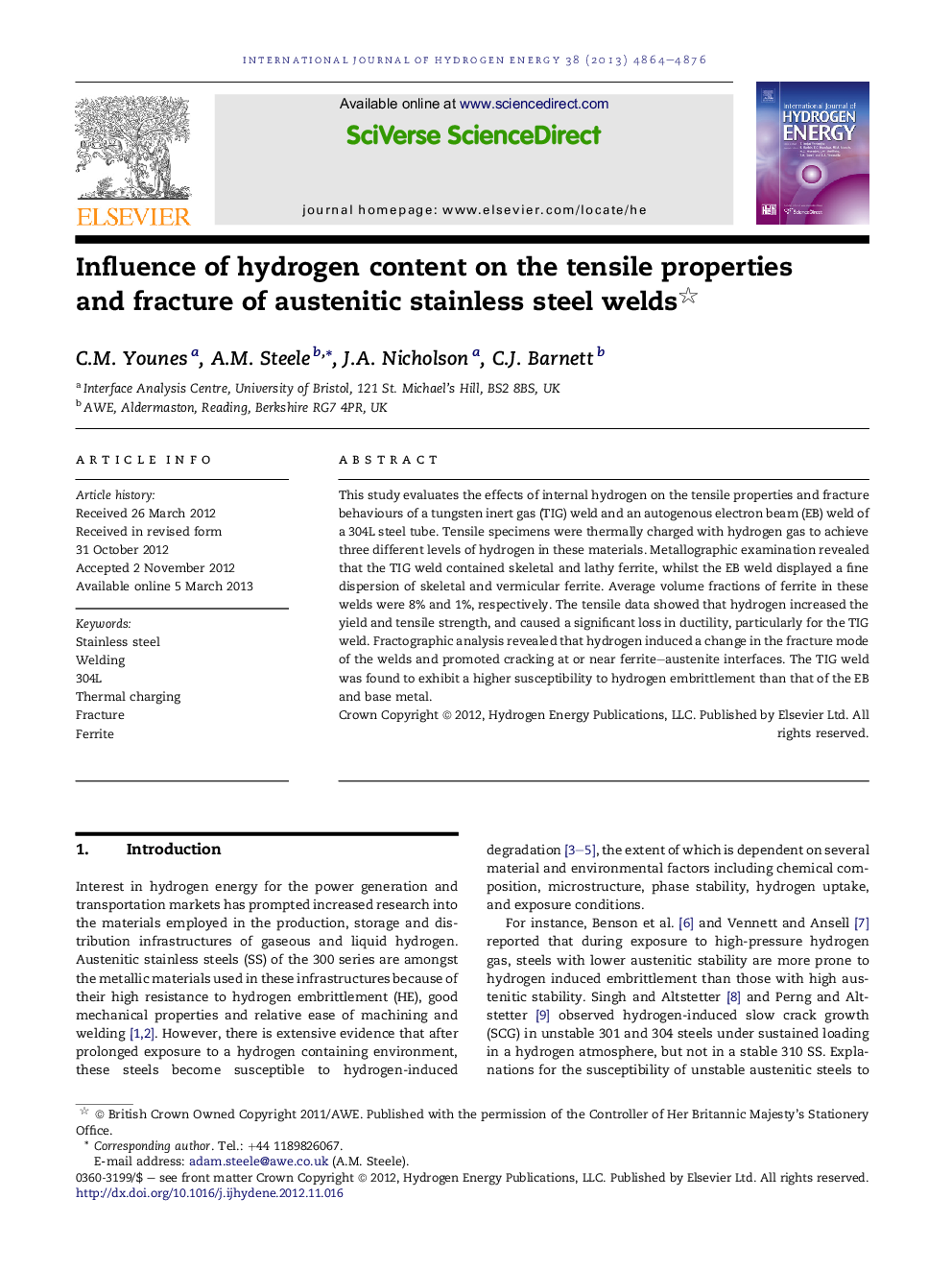| Article ID | Journal | Published Year | Pages | File Type |
|---|---|---|---|---|
| 1278181 | International Journal of Hydrogen Energy | 2013 | 13 Pages |
This study evaluates the effects of internal hydrogen on the tensile properties and fracture behaviours of a tungsten inert gas (TIG) weld and an autogenous electron beam (EB) weld of a 304L steel tube. Tensile specimens were thermally charged with hydrogen gas to achieve three different levels of hydrogen in these materials. Metallographic examination revealed that the TIG weld contained skeletal and lathy ferrite, whilst the EB weld displayed a fine dispersion of skeletal and vermicular ferrite. Average volume fractions of ferrite in these welds were 8% and 1%, respectively. The tensile data showed that hydrogen increased the yield and tensile strength, and caused a significant loss in ductility, particularly for the TIG weld. Fractographic analysis revealed that hydrogen induced a change in the fracture mode of the welds and promoted cracking at or near ferrite–austenite interfaces. The TIG weld was found to exhibit a higher susceptibility to hydrogen embrittlement than that of the EB and base metal.
► The properties of two different welds and their base metal are compared. ► The change in properties with increasing hydrogen content are compared. ► Increasing hydrogen content increased strength and decreased ductility. ► Hydrogen was found to cause a change in fracture mode. ► The tungsten inert gas-welded material was more susceptible to hydrogen damage.
